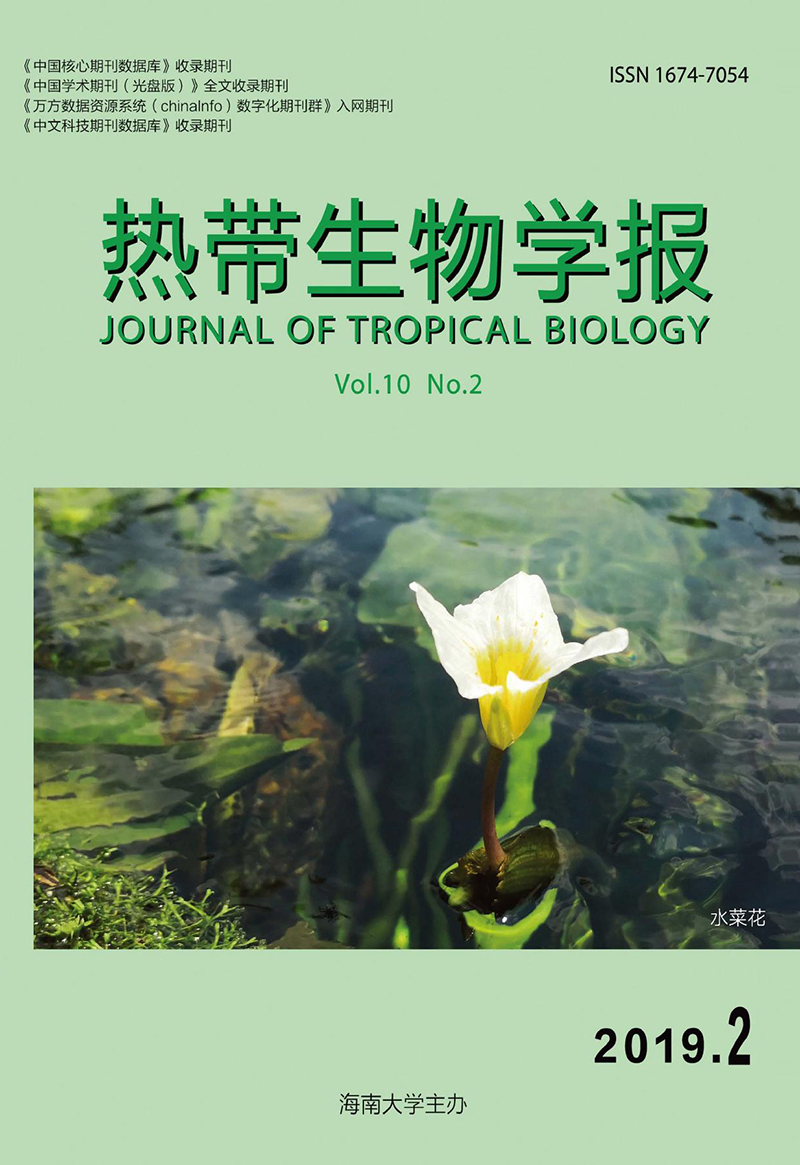|
[1]
|
余红梅.化学农药对农业环境的污染及防治探究[J].南方农业, 2018, 12 (24):166-167. |
|
[2]
|
柏亚罗.氯虫苯甲酰胺等双酰胺类杀虫剂市值接近20亿美元[J].今日农药, 2018 (11):36-40. |
|
[3]
|
陈乐乐, 于伟丽, 苏磊.鱼尼丁受体抑制剂类杀虫剂的研究现状及展望[J].今日农药, 2018 (1):19-21. |
|
[4]
|
MATECKI S, DRIDI H, JUNG B, et al.Leaky ryanodine receptors contribute to diaphragmatic weakness during mechanical ventilation[J].Proceedings of the National Academy of Sciences, 2016, 113 (32):9069-9074. |
|
[5]
|
EFREMOV R G, LEITNER A, AEBERSOLD R, et al.Architecture and conformational switch mechanism of the ryanodine receptor[J].Nature, 2015, 517 (7532):39. |
|
[6]
|
胡译文, 孙建昌, 耿阳阳, 等.溴氰虫酰胺研究进展及应用现状[J].南方农业, 2016, 10 (31):24-27. |
|
[7]
|
何发林, 姜兴印, 尚佃龙, 等.溴氰虫酰胺胁迫对小地老虎保护酶和解毒酶活性的诱导效应[J].植物保护, 2019, 45 (2):90-96. |
|
[8]
|
徐春梅.溴氰虫酰胺种子处理防治玉米田小地老虎[D].济南:山东农业大学, 2017. |
|
[9]
|
TIWARI S, STELINSKI L L.Effects of cyantraniliprole, a novel anthranilic diamide insecticide, against Asian citrus psyllid under laboratory and field conditions[J].Pest Manag Sci, 2013, 69 (9):1066-1072. |
|
[10]
|
林涛, 游泳, 郑丽祯, 等.三种双酰胺类杀虫剂制剂对环境非靶标生物的急性毒性[J].农药学学报, 2015, 17 (6):757-762. |
|
[11]
|
KOBRAEI M E, WHITE D S.Effects of 2, 4-dichlorohe-noxyacetic acid on kentucky algae:simultaneous laboratory and field toxicity tests[J].Archives of Environmental Contamination and Toxicology, 1996, 31 (4):571-580. |
|
[12]
|
Organisation for Economic Cooperation and Development (OECD).OECD TG201.OECD Guidelines for the Testing of chemicals, freshwater alga and cyanobacteria, growth inhibition test.Paris[EB/OL].OECD, [2006-08-23].http://www.oecd-ilibrary.org/environment/test-no-201-guidelines-for-the-testing-of-chemicals-freshwater-alga-and-cvanobacteria-growth-inhibition-test_9789264203785-en. |
|
[13]
|
王学奎.植物生理生化实验原理和技术[M].2版.北京:高等教育出版社, 2002:220-227. |
|
[14]
|
程晓燕, 赵新仕, 叶立群, 等.纳米BiOBr对羊角月牙藻的毒性效应[J].环境科学学报, 2018, 38 (10):4176-4184. |
|
[15]
|
GHANI M A, BARRIL C, BEDGOOD Jr D R, et al.Measurement of antioxidant activity with the thiobarbituric acid reactive substances assay[J].Food Chemistry, 2017, 230:195-207. |
|
[16]
|
徐艳秋, 刘斌, 常媛, 等.超氧化物歧化酶在乙型肝炎和肝细胞癌中的应用价值[J].中国现代普通外科进展, 2017, 20 (11):841-844. |
|
[17]
|
朱若岑, 蒋维维, 谭柱良, 等.动物体内活性氧、氧化应激与细胞凋亡以及抗氧化剂研究进展[J].中兽医医药杂志, 2015, 34 (3):21-25. |
|
[18]
|
LIU C, COLÓN B C, ZIESACK M, et al.Water splitting-biosynthetic system with CO2 reduction efficiencies exceeding photosynthesis[J].Science, 2016, 352 (6290):1210-1213. |
|
[19]
|
KIM D, SAKIMOTO K K, HONG D, et al.Artificial photosynthesis for sustainable fuel and chemical production[J].Angewandte Chemie International Edition, 2015, 54 (11):3259-3266. |
|
[20]
|
FISCHER W W, HEMP J, JOHNSON J E.Evolution of oxygenic photosynthesis[J].Annual Review of Earth and Planetary Sciences, 2016, 44:647-683. |
|
[21]
|
CHENU A, SCHOLES G D.Coherence in energy transfer and photosynthesis[J].Annual Review of Physical Chemistry, 2015, 66:69-96. |






 DownLoad:
DownLoad: